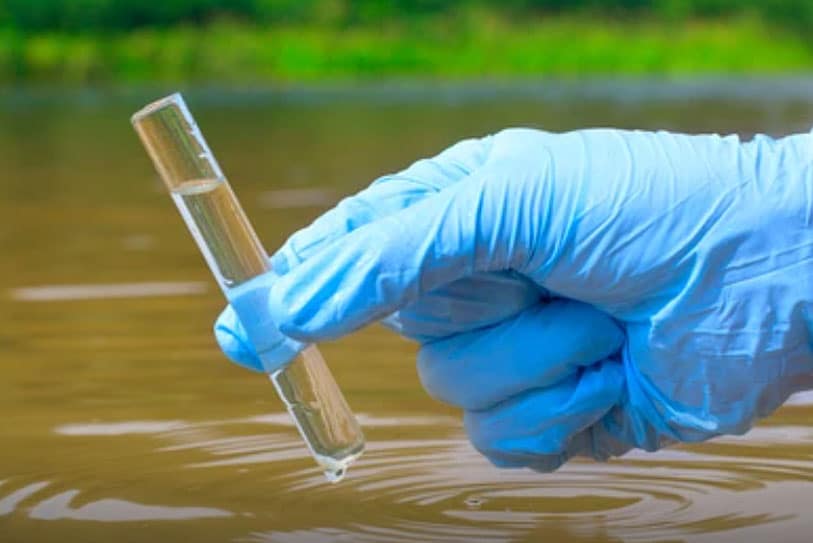Passive Remedy for Nitrogen Compounds in Groundwater
Summary: Nitrogen compound impacts to groundwater near an abandoned septic system were identified during NJPDES monitoring by the operator of a research and development laboratory. During ISRA activities, Princeton Geoscience delineated the impacts and developed an understanding of key fate and transport issues relevant to remediation. We initially developed and tested a successful enhanced, in-situ bioremediation approach. This approach was later simplified when the remediation standard for ammonia increased six-fold. The current plan consists of discharging potable water to the former leachfield for source reduction and implementing Monitored Natural Attenuation.
Following initial work by the property owner under the New Jersey Pollutant Discharge Elimination System (NJPDES) program, Princeton Geoscience delineated the extent of nitrate- and ammonia-impacted groundwater downgradient of an abandoned septic system. The delineation and NJPDES monitoring results indicated the presence of an ongoing source of groundwater impact, in this case, ammonium ions sorbed to the soil matrix in the vadose zone and saturated zone beneath the abandoned leachfield. Based on the groundwater concentrations of nitrate and ammonia and the proximity of the downgradient property boundary and nearby wetlands, some form of source reduction was considered a prerequisite to implementing a monitored natural attenuation program.
Due to various physical constraints, source excavation was ruled out, as were strategies requiring hydraulic containment. Nitrogen compounds, principally nitrate, nitrite, and ammonia, are among the most common groundwater contaminants in rural areas, where septic systems and agricultural activities are major sources. Although the chemistry of the nitrogen cycle and processes for above-ground treatment are well understood through many years of experience in the wastewater treatment industry, that knowledge and experience has not been extensively employed in the remediation of underground sources, such as abandoned septic systems. Princeton Geoscience developed and evaluated through bench-scale and field pilot testing, a two-stage, in-situ bioremediation strategy that utilizes gravity flow through the existing septic field piping as its only active component.
Initially, tests showed that Enhanced In Situ Bioremediation (EISB) could achieve source reduction and plume cutoff, two key prerequisites to implementing monitored natural attenuation (MNA). The EISB remedy included nitrification enhancement in the leachfield area, through injections of an oxygen release compound and denitrification enhancement through injection of a carbon source material downgradient of the leachfield.
The strategy was conceptually approved by NJDEP. As noted in the detailed project description for this site, the cleanup standard for ammonia in groundwater recently increased by a factor of six. Princeton Geoscience has proposed an alternate remedy based on potable water discharge and MNA.
